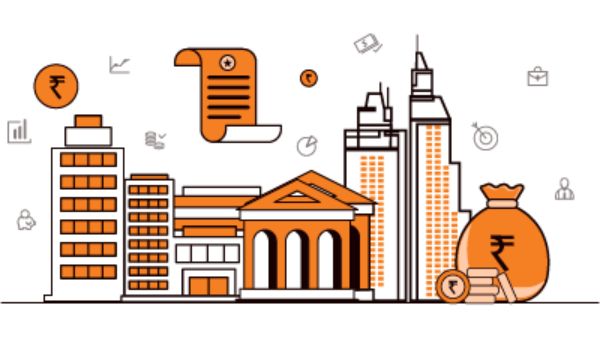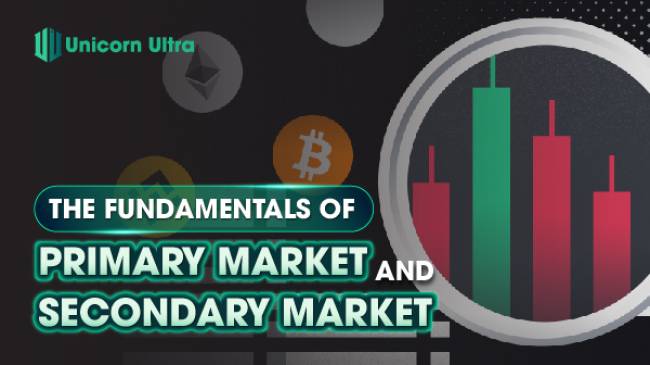The primary market and secondary market are pivotal components of the financial world, playing vital roles in facilitating the movement of capital and securities. Whether you are an aspiring investor or simply curious about the functioning of financial markets, comprehending these concepts is essential. This article aims to demystify the primary market and secondary market, shedding light on their types, offerings, benefits, and the fundamental distinctions between the two.
Table of Contents
What is Primary Market?
The primary market, also referred to as the new issue market, is the initial stage of the capital market where securities are originated and offered to investors for sale. It serves as the starting point for companies looking to raise funds by issuing shares, bonds, or other financial instruments. In the primary market, securities are directly sold to investors without the involvement of intermediaries.

Types of Primary Market
- Initial Public Offering (IPO): An IPO takes place when a privately-held company decides to go public and offers its shares to the general public for the first time. This process allows the company to generate capital and expand its operations. Investors participating in an IPO have the potential to benefit from early-stage investment opportunities.
- Follow-on Public Offering (FPO): An FPO occurs when a publicly traded company issues additional shares to the public. Such offerings are typically conducted to raise additional capital for purposes such as debt repayment or expansion plans.
Different Types of Primary Offerings
- Public Issue: A public issue involves offering securities to the general public through mechanisms like an IPO or FPO. Investors can directly apply for shares or bonds or go through intermediaries such as brokers.
- Rights Issue: A rights issue transpires when a company offers its existing shareholders the right to purchase additional shares at a predetermined price within a specified time frame. This enables shareholders to maintain their ownership percentage and partake in the company's growth.
Benefits of the Primary Market
The primary market offers several advantages for both companies and investors:
- Capital Generation: Companies can raise capital by issuing securities in the primary market, allowing them to fund new projects, expand operations, or repay debts.
- Investment Opportunities: Investors can participate in the primary market to acquire securities directly from the issuing company, potentially benefiting from early-stage investments and capital appreciation.
- Transparency: The primary market operates under regulatory oversight, ensuring transparency in the issuance and sale of securities. Investors have access to relevant information to make informed investment decisions.
What is Secondary Market?
The secondary market, also known as the stock market or stock exchange, is where previously issued securities are traded between investors. Unlike the primary market, the secondary market enables investors to buy and sell securities among themselves without the involvement of the issuing company.

Types of Secondary Markets
- Stock Exchanges: Stock exchanges like the New York Stock Exchange (NYSE) and NASDAQ provide platforms for trading stocks, bonds, and other securities. These exchanges have established rules and regulations governing the trading process.
- Over-the-Counter (OTC) Market: The OTC market comprises decentralized trading platforms where securities are directly traded between parties. Unlike stock exchanges, the OTC market does not have a centralized physical location.
Benefits of the Secondary Market
The secondary market offers various advantages to investors:
- Liquidity: The secondary market provides investors with liquidity, allowing them to buy and sell securities quickly and easily. This liquidity enables investors to convert their investments into cash when required.
- Price Discovery: Through the secondary market, investors determine the fair market value of securities through the interplay of supply and demand. Collective actions of market participants aid in establishing the market price of securities.
- Diversification: Investors can diversify their portfolios by purchasing securities across different companies and sectors in the secondary market. Diversification helps spread investment risk and potentially enhances returns.
Primary Market and Secondary Market: Key Differences

Although the primary market and secondary market are integral parts of the overall financial market, they differ in several key aspects:
- Purpose: The primary market aims to raise capital for companies, while the secondary market facilitates the trading of existing securities among investors.
- Issuance: The primary market involves the issuance of securities for the first time, while the secondary market deals with the trading of already issued securities.
- Involvement: The primary market includes the issuing company, investors, and intermediaries, whereas the secondary market involves only investors trading among themselves.
- Capital Flow: In the primary market, capital flows from investors to the issuing company, whereas in the secondary market, capital flows between investors.
The role of primary market and secondary market
Primary and secondary markets are crucial components of the financial system, playing distinct roles in the issuance, trading, and valuation of financial securities. Here's an overview of the roles of both primary and secondary markets:
Primary Market:
-
Capital Raising: The primary market is where companies and governments issue new securities to raise capital for various purposes, such as financing expansion, launching new projects, or paying off debt. This process is known as an initial public offering (IPO) for stocks or a bond issuance for debt securities.
-
Direct Transactions: In the primary market, securities are sold directly from the issuer to investors. This means the issuer receives the proceeds from the sale of the securities, which can be used for their intended purposes.
-
Price Determination: The price of securities in the primary market is typically determined through a bidding process or negotiations between the issuer and potential investors. The issuer sets an offering price or price range, and investors submit bids indicating the number of securities they are willing to purchase at that price.
-
Underwriting: In many cases, the issuer works with investment banks or underwriters to facilitate the issuance process. Underwriters help assess the value of the securities, market them to potential investors, and guarantee the sale of the securities at a negotiated price.
-
Regulatory Compliance: Issuers in the primary market must comply with various regulatory requirements, including disclosure of financial information and adherence to securities laws. This ensures that investors have access to relevant information before making investment decisions.
Secondary Market:
-
Trading and Liquidity: The secondary market is where previously issued securities are bought and sold among investors, without involvement from the issuing company or government. It provides liquidity to investors by allowing them to convert their investments into cash or other securities.
-
Price Discovery: The secondary market plays a crucial role in determining the market price of securities. Prices in the secondary market are influenced by factors such as supply and demand, investor sentiment, and economic conditions.
-
Efficient Allocation of Capital: The secondary market enables investors to reallocate their capital by buying or selling securities. This allows for efficient capital allocation as investors can move their funds to different assets or sectors based on changing market conditions and investment goals.
-
Speculation and Investment: Investors in the secondary market include both speculators looking to profit from short-term price fluctuations and long-term investors seeking to build wealth over time. The secondary market accommodates a wide range of trading strategies and investment horizons.
-
Price Transparency: Prices of securities traded in the secondary market are publicly available and transparent, allowing investors to make informed decisions. This transparency is essential for fair and efficient markets.
-
Market Regulation: Secondary markets are subject to regulatory oversight to ensure fair trading practices, prevent market manipulation, and protect investor interests. Regulatory authorities monitor exchanges and enforce rules and regulations.
In summary, the primary market is where securities are initially issued and sold by issuers to raise capital, while the secondary market is where these previously issued securities are traded among investors. Together, these markets form the backbone of the financial system, facilitating the flow of capital and the efficient allocation of investments.
Conclusion
The primary market and secondary market form the foundation of the financial market, serving distinct purposes and providing different opportunities for companies and investors. While the primary market enables capital generation and initial investments, the secondary market offers liquidity, price discovery, and portfolio diversification. Grasping these markets and their disparities empowers investors to make informed decisions and navigate the intricacies of the financial world with confidence. Let's go with U2U to follow the latest information on the market.






